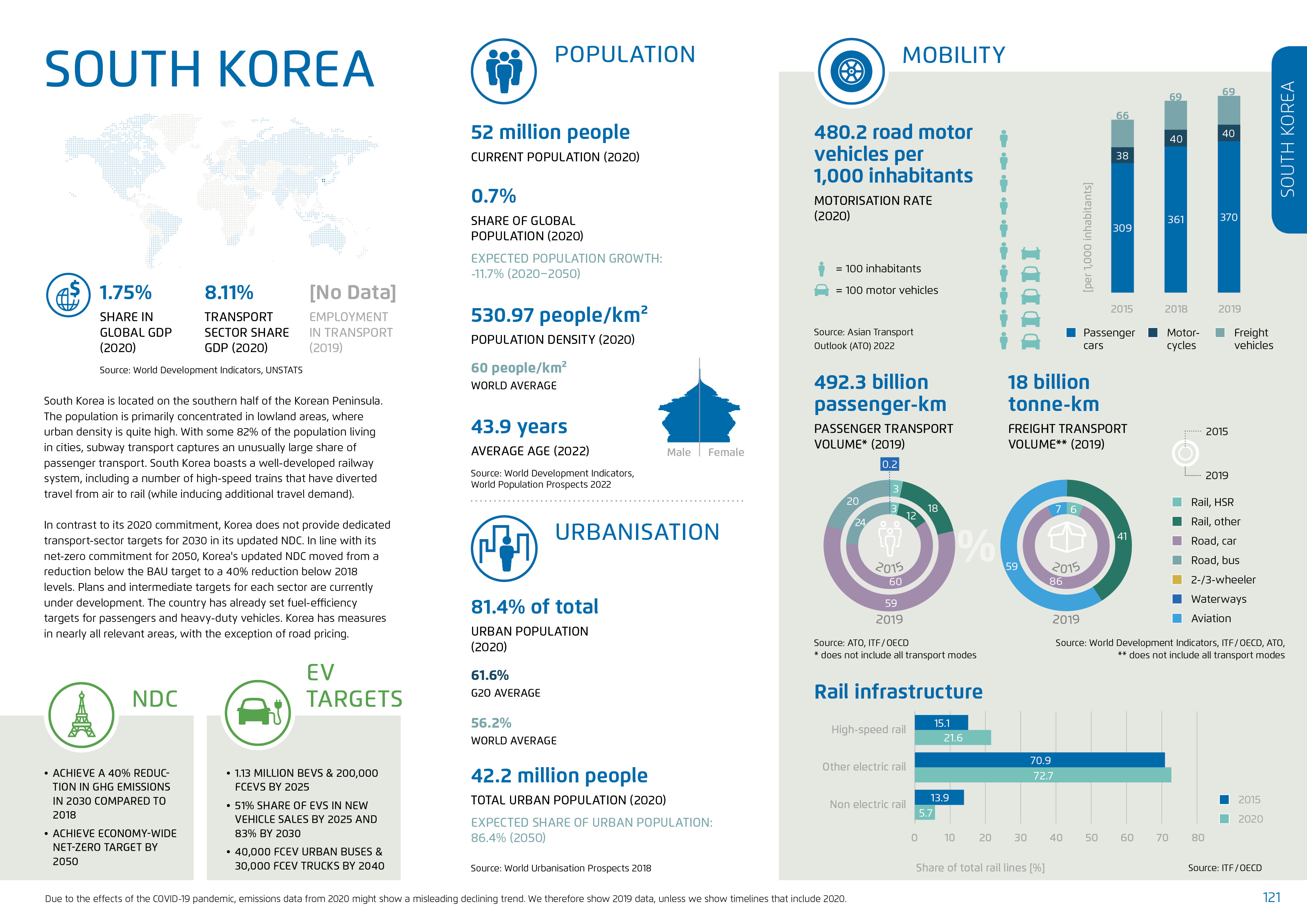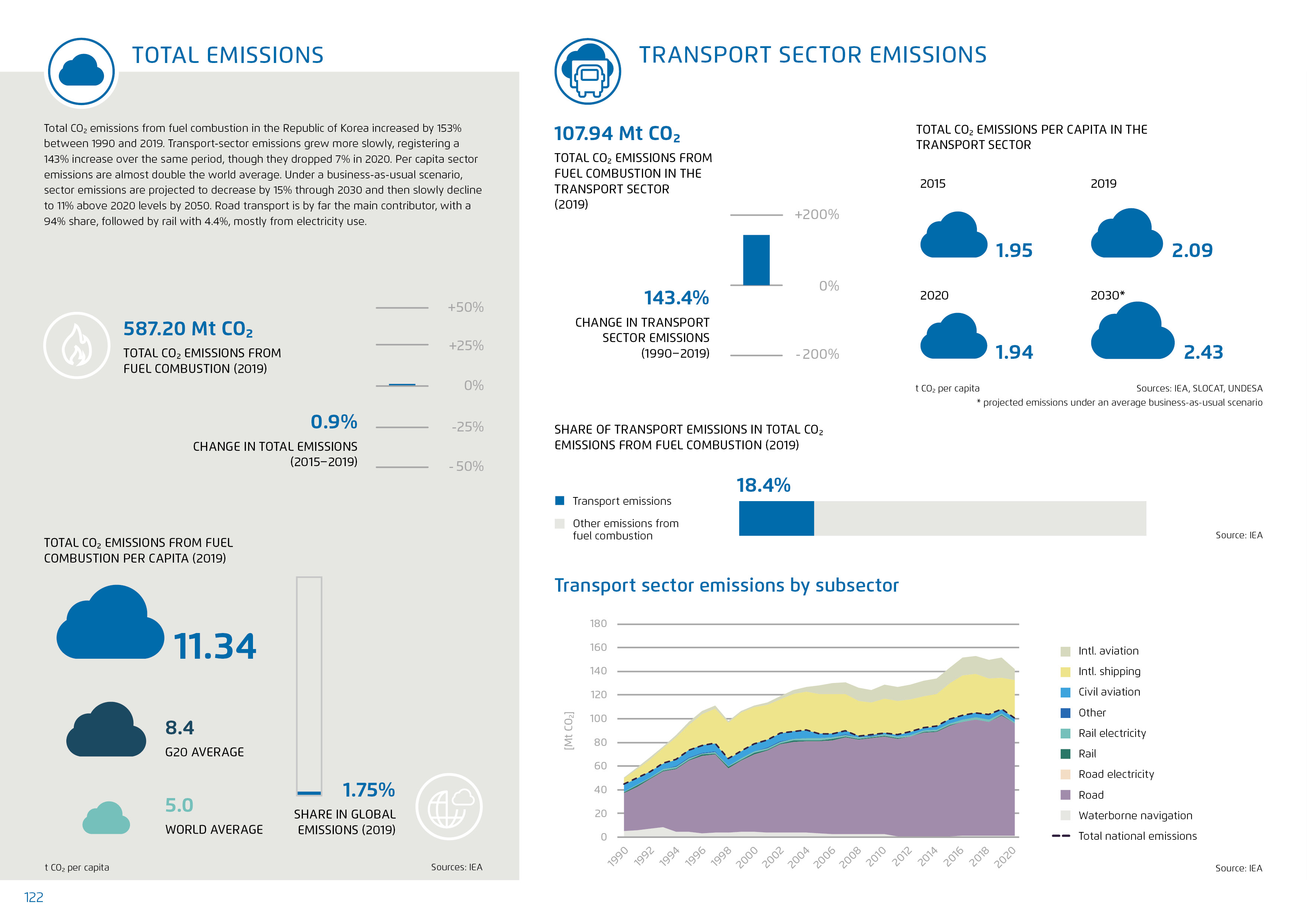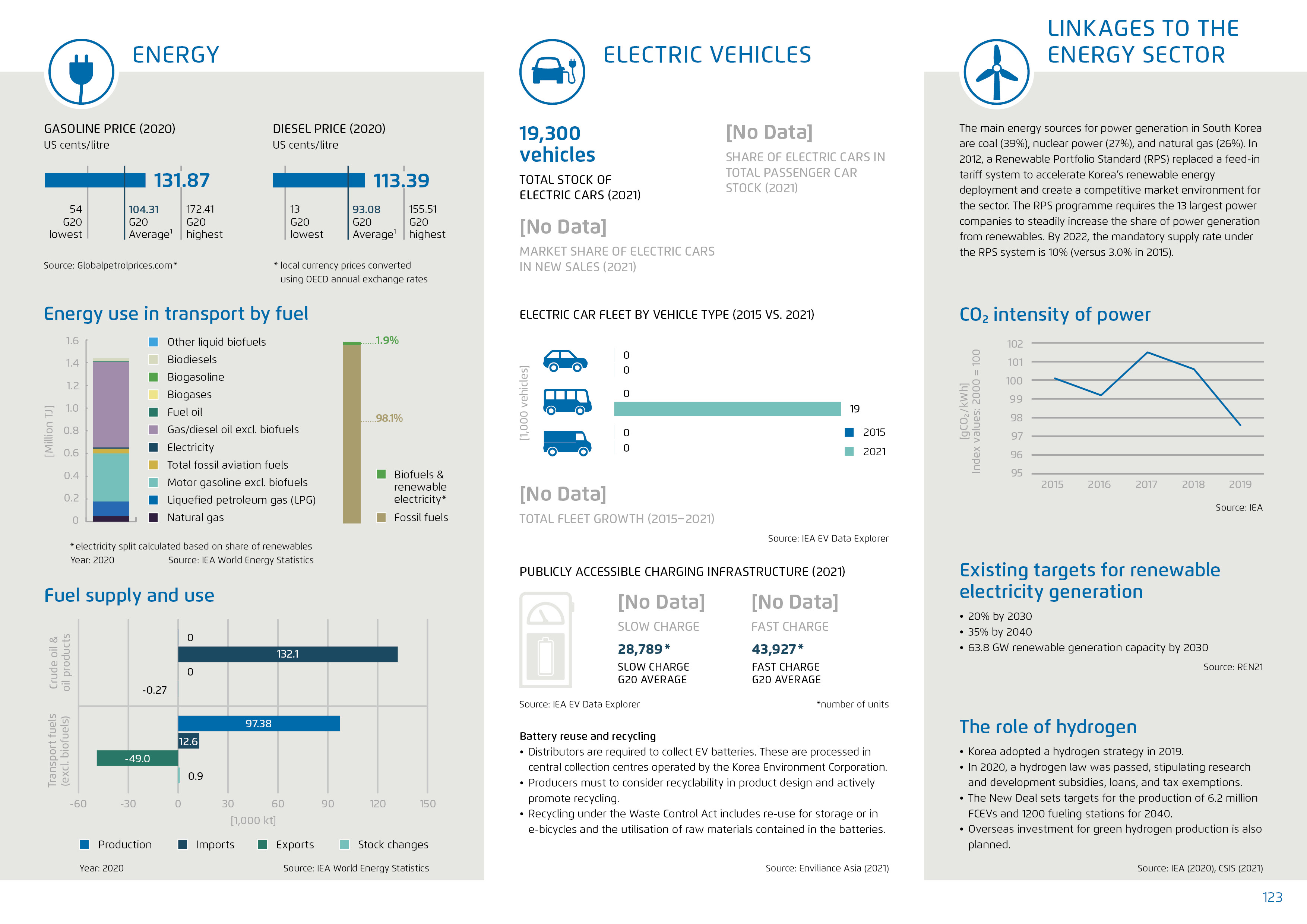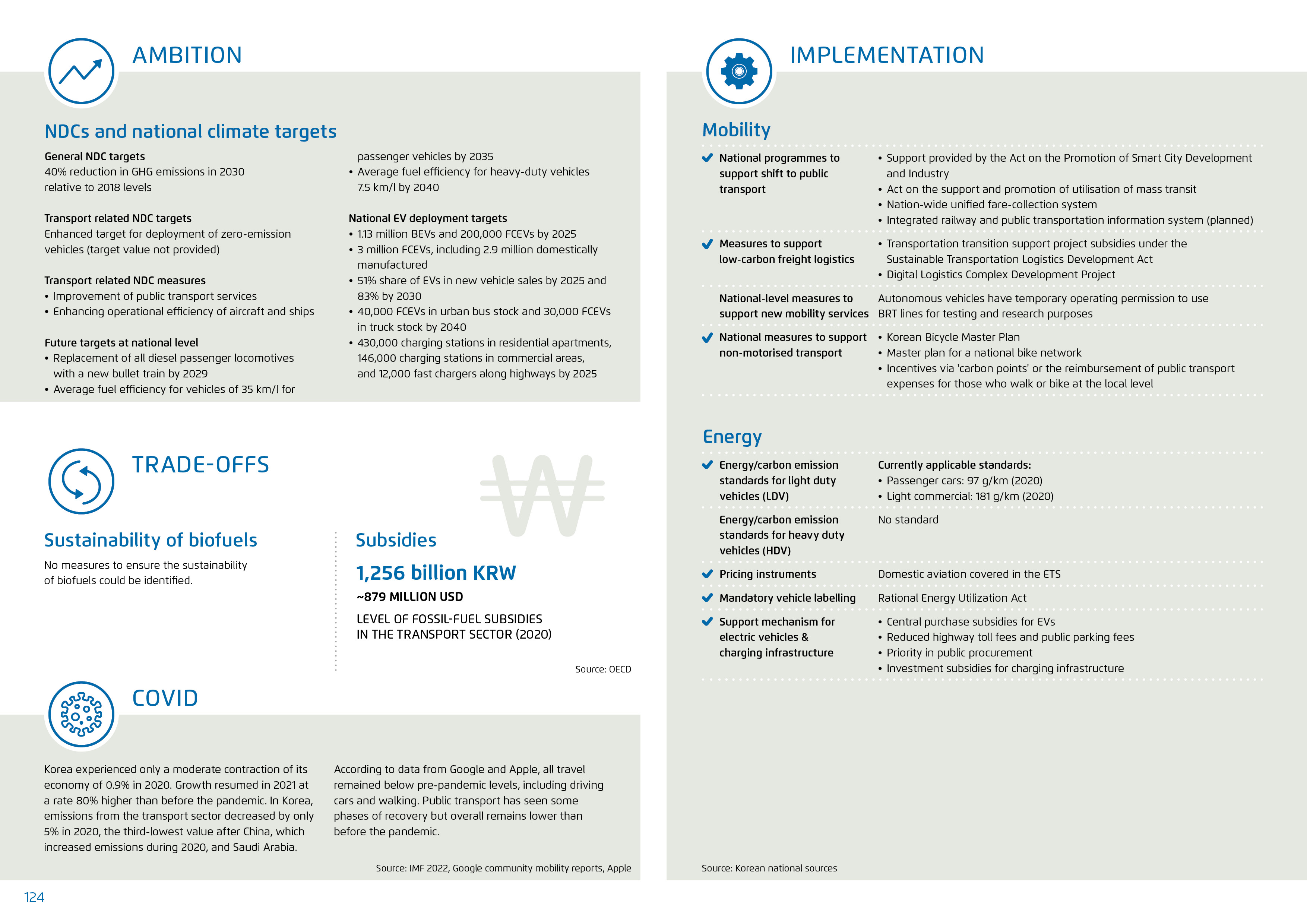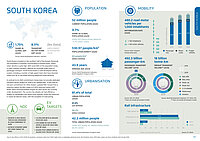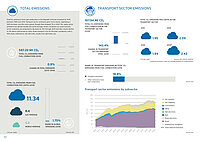This content is also available in: German
South Korea
Net-zero target: 2050 / Motorisation rate (2020): 480.2 vehicles per 1,000 inhabitants / Change in transport sector emissions (1990-2019): 143.4 % / Projected total CO2 emissions per capita in the transport sector in 2030: 2.43 t
South Korea is located on the southern half of the Korean Peninsula. The population is primarily concentrated in lowland areas, where urban density is quite high. With some 82% of the population living in cities, subway transport captures an unusually large share of passenger transport. South Korea boasts a well-developed railway system, including a number of high-speed trains that have diverted travel from air to rail (while inducing additional travel demand).
In contrast to its 2020 commitment, Korea does not provide dedicated transport-sector targets for 2030 in its updated NDC. In line with its net-zero commitment for 2050, Korea's updated NDC moved from are duction below the BAU target to a 40% reduction below 2018 levels. Plans and intermediate targets for each sector are currently under development. The country has already set fuel-efficiency targets for passengers and heavy-duty vehicles. Korea has measures in nearly all relevant areas, with the exception of road pricing.
Key figures on transport and climate
Published in Towards Decarbonizing Transport 2023.

